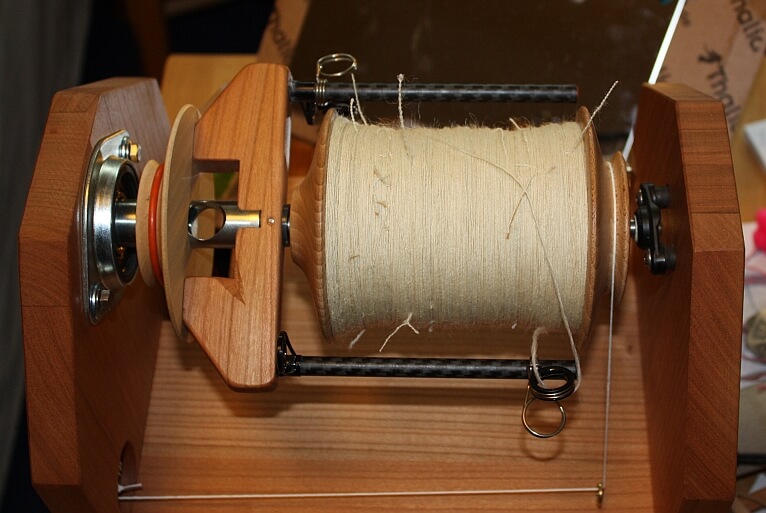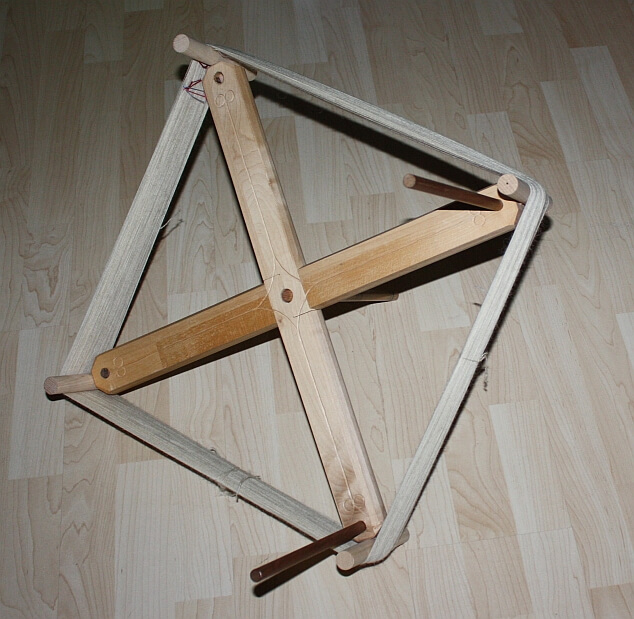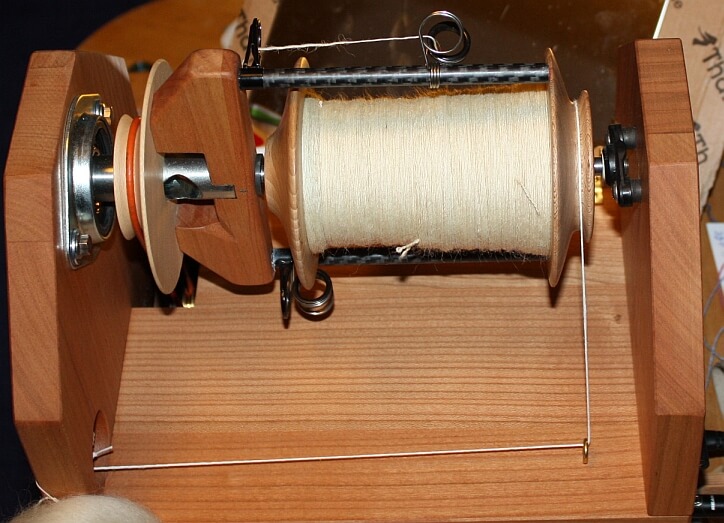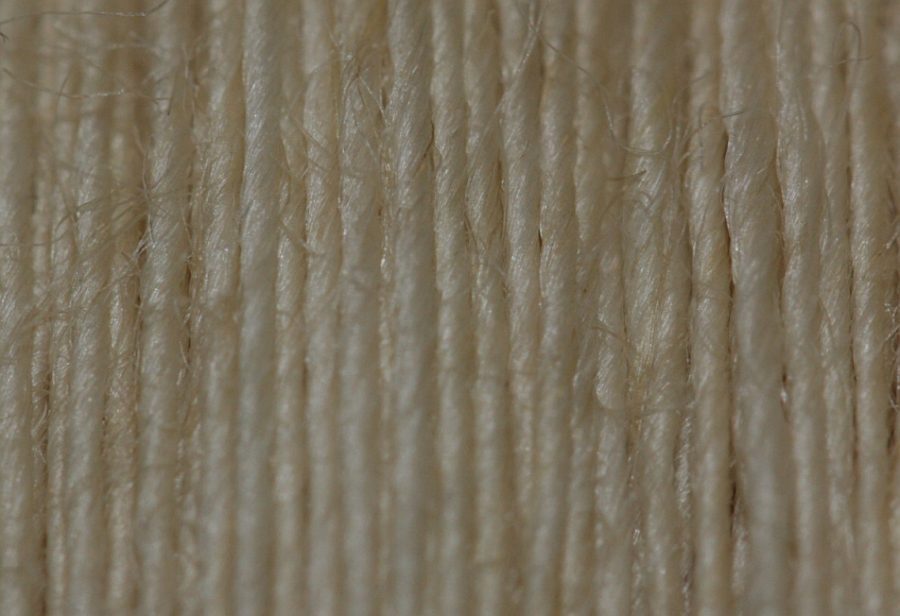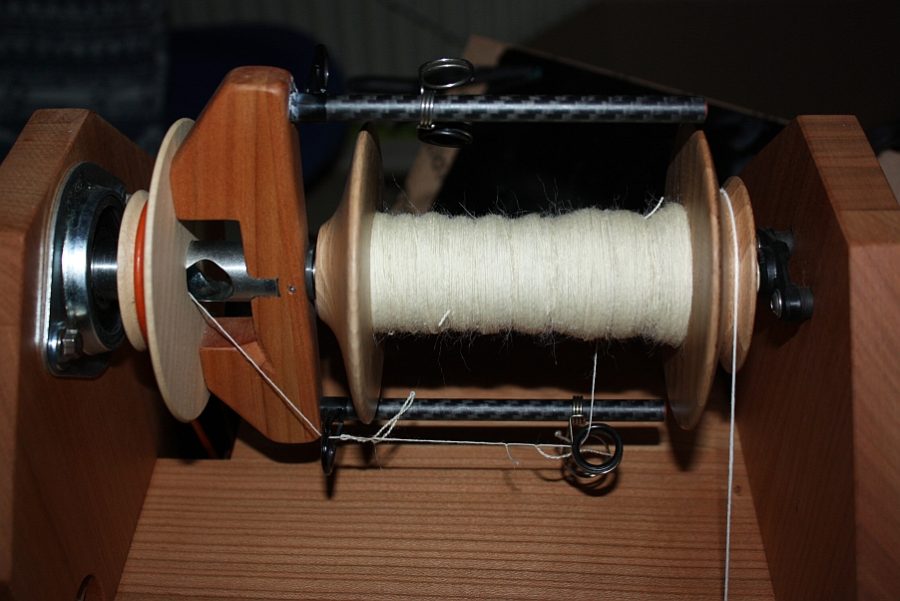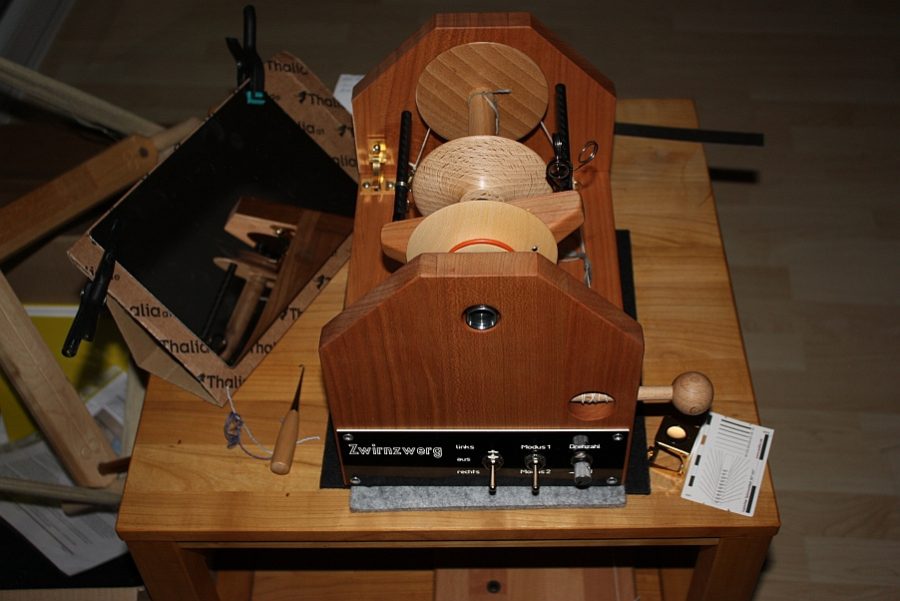You've seen enough pictures of bobbins now - time to see more spinning pictures, but with actual spinning in them:
[caption id="attachment_2827" align="alignnone" width="451"]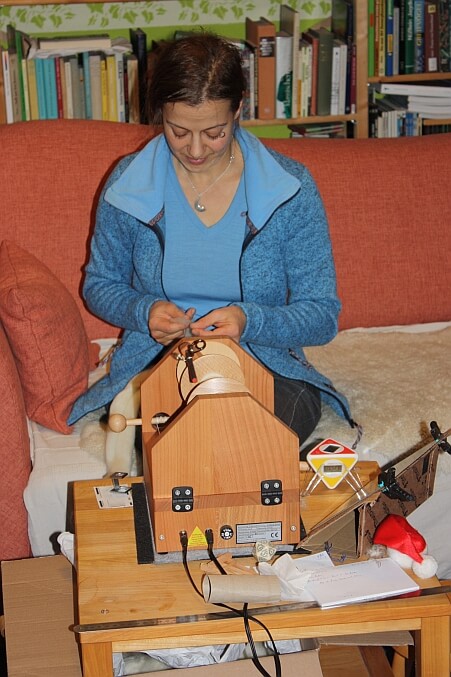 Spinning happily along - now working on the weft thread for one of the fabrics.
Spinning happily along - now working on the weft thread for one of the fabrics.
It is coming along nicely, the spinning work. Not every day is like every other one, but today felt like a really good one - which is nice, as I want to have a good batch done and ready to go into the post by the end of this week.
[caption id="attachment_2824" align="alignnone" width="640"]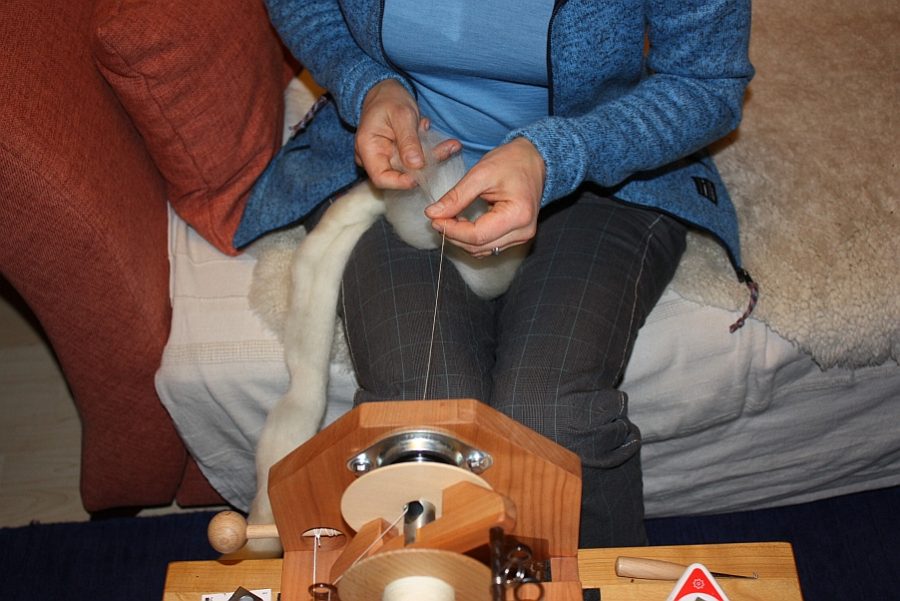 Drafting from the Romney top. You can see the difference between the fluffed-up loosened (pre-drafted) fibres beneath my hands and the original top hanging down beside my leg.
Drafting from the Romney top. You can see the difference between the fluffed-up loosened (pre-drafted) fibres beneath my hands and the original top hanging down beside my leg.
There is, of course, also the periodical checking of thread thickness and spinning angle:
[caption id="attachment_2826" align="alignnone" width="640"]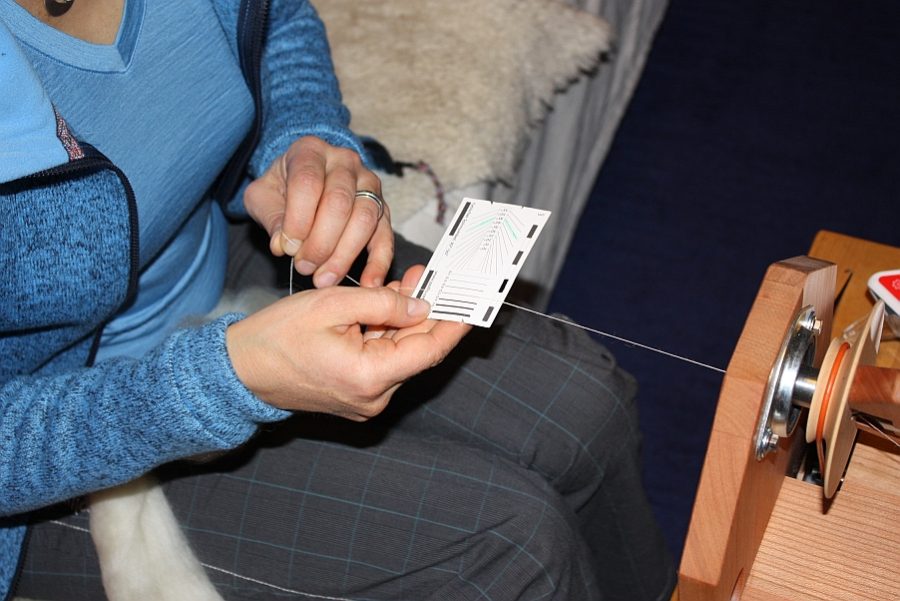 First the thickness... which should be around 0.5 mm for this one...
First the thickness... which should be around 0.5 mm for this one...
[caption id="attachment_2825" align="alignnone" width="640"]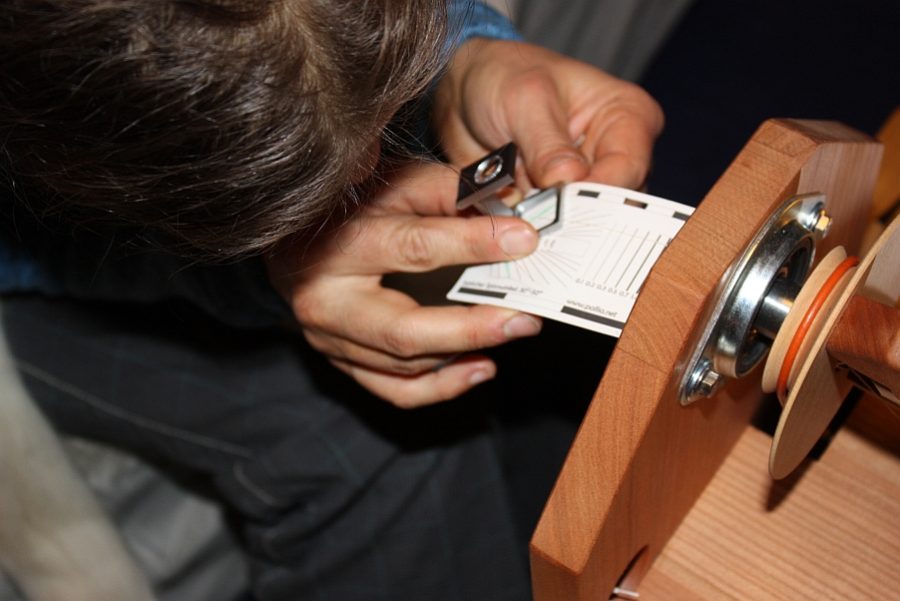 ...and then the angle with help of my thread counter.
...and then the angle with help of my thread counter.
For today, though, I'm done spinning. More thread will be made tomorrow!
[caption id="attachment_2827" align="alignnone" width="451"]
 Spinning happily along - now working on the weft thread for one of the fabrics.
Spinning happily along - now working on the weft thread for one of the fabrics.It is coming along nicely, the spinning work. Not every day is like every other one, but today felt like a really good one - which is nice, as I want to have a good batch done and ready to go into the post by the end of this week.
[caption id="attachment_2824" align="alignnone" width="640"]
 Drafting from the Romney top. You can see the difference between the fluffed-up loosened (pre-drafted) fibres beneath my hands and the original top hanging down beside my leg.
Drafting from the Romney top. You can see the difference between the fluffed-up loosened (pre-drafted) fibres beneath my hands and the original top hanging down beside my leg.There is, of course, also the periodical checking of thread thickness and spinning angle:
[caption id="attachment_2826" align="alignnone" width="640"]
 First the thickness... which should be around 0.5 mm for this one...
First the thickness... which should be around 0.5 mm for this one...[caption id="attachment_2825" align="alignnone" width="640"]
 ...and then the angle with help of my thread counter.
...and then the angle with help of my thread counter.For today, though, I'm done spinning. More thread will be made tomorrow!




